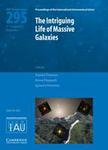版权所有:内蒙古大学图书馆 技术提供:维普资讯• 智图
内蒙古自治区呼和浩特市赛罕区大学西街235号 邮编: 010021

作者机构:Yunnan Observatories CAS Kunming 650011 China Key Laboratory for the Structure and Evolution of Celestial Objects CAS Kunming 650011 China Center for Astronomical Mega-Science Chinese Academy of Science Beijing 100012 China Institute of Gravitational Wave Astronomy School of Physics and Astronomy University of Birmingham Birmingham B15 2TT United Kingdom Institute of Astronomy RAS 48 Pyatnitskaya Str. Moscow 119017 Russian Federation Max Planck Institute for Astrophysics Karl-Schwarzschild-Str. 1 Garching b. München 85741 Germany Space Research Institute of Russian Academy of Sciences Profsoyuznaya 84/32 Moscow 117997 Russian Federation
出 版 物:《Proceedings of the International Astronomical Union》 (国际天文学联合会会刊)
年 卷 期:2019年第14卷第Sup343期
页 面:371-372页
学科分类:0709[理学-地质学] 07[理学] 0708[理学-地球物理学] 0704[理学-天文学] 0825[工学-航空宇航科学与技术]
主 题:cataclysmic variables stars:novae white dwarfs
摘 要:Using a hybrid binary population synthesis approach, we modelled the formation and evolution of populations of accreting white dwarfs (WDs) for differing star formation histories. We found that the delay time distribution of SNe Ia in the single degenerate scenario is inconsistent with observations. Additionally, we found that our predicted X-ray and UV emission of populations of accreting WDs are consistent with the X-ray luminosities of early-type galaxies observed by Chandra and the HeII 4686 Å/Hβ line ratio measured in stacked SDSS spectra of passively evolving galaxies. Moreover, we found that the majority of current novae in elliptical-like galaxies have low-mass WDs, long decay times, long recurrence periods and are relatively faint. In contrast, the majority of current novae in spiral-like galaxies have massive WDs, short decay times, short recurrence periods and are relatively bright. Our predicted distribution of mass-loss timescales in an M31-like galaxy is consistent with observations for Andromeda. © International Astronomical Union 2019.